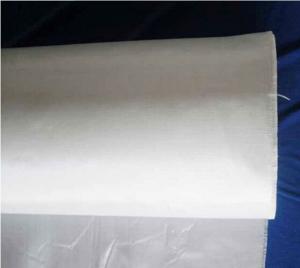Fiberglass S Glass: The Stronger Alternative to E Glass
When it comes to composite materials, the world of fiberglass is a fascinating one. For those who are not familiar with the term, fiberglass is a composite material made of a plastic matrix reinforced by fine fibers of glass. It’s versatile, strong, and has a wide range of applications, from automotive to aerospace, and even in everyday household items. But did you know that there’s a stronger alternative to the commonly used E Glass? It’s called S Glass, and it’s making waves in the industry.
The Strength of S Glass
What makes S Glass so special? To understand this, we need to delve into the science behind it. S Glass, or E-CR Glass, is a high-performance glass fiber that has a higher tensile strength and modulus compared to E Glass. This means that S Glass is not only stronger but also more rigid. It’s like comparing a sturdy oak tree to a more flexible willow. The increased strength and rigidity of S Glass make it an ideal choice for applications where high mechanical stress is expected.
Applications of S Glass
But where does S Glass shine? Let’s explore some of the areas where S Glass is making a difference.
1. Aerospace Industry: In the aerospace industry, every gram counts. S Glass is used in the manufacturing of aircraft components due to its high strength-to-weight ratio. This helps in reducing the overall weight of the aircraft, leading to better fuel efficiency and reduced emissions.
2. Wind Energy: Wind turbines are subjected to extreme weather conditions and high mechanical stress. S Glass is used in the blades of wind turbines to ensure durability and strength, contributing to the longevity of these renewable energy sources.
3. Automotive Industry: From sports cars to heavy-duty trucks, the automotive industry is always looking for ways to improve performance and safety. S Glass is used in the manufacturing of composite parts that are lighter and stronger, enhancing both the performance and safety of vehicles.
4. Construction: In construction, materials need to withstand a lot. S Glass is used in reinforced concrete and other building materials to improve their strength and durability.
The Manufacturing Process of S Glass
The manufacturing process of S Glass is quite similar to that of E Glass, but with some key differences. The raw materials used to produce S Glass are of higher quality, and the melting process is more controlled to ensure the desired properties are achieved. This results in a more uniform and consistent fiber, which contributes to the overall strength and performance of the final product.
Comparing S Glass and E Glass
Now that we’ve seen the strengths and applications of S Glass, let’s compare it with E Glass. While E Glass is still widely used due to its cost-effectiveness and availability, S Glass offers several advantages. Here are a few key points to consider:
1. Tensile Strength: S Glass has a higher tensile strength than E Glass, making it more suitable for applications that require high mechanical stress.
2. Modulus of Elasticity: S Glass also has a higher modulus of elasticity, which means it’s more rigid and less prone to deformation under stress.
3. Cost: One of the main drawbacks of S Glass is its cost. It is more expensive than E Glass, which can be a limiting factor for some applications.
4. Availability: E Glass is more widely available than S Glass, which can make it a more convenient option for certain projects.
The Future of S Glass
As the demand for stronger, lighter, and more durable materials continues to grow, the future looks bright for S Glass. With advancements in technology and manufacturing processes, we can expect to see more widespread adoption of S Glass in various industries.
In conclusion, S Glass is a high-performance alternative to E Glass that offers increased strength and rigidity. While it may come at a higher cost and with some limitations in availability, its benefits in terms of performance and durability make it a compelling choice for many applications. Whether you’re in the aerospace industry, wind energy, automotive, or construction, S Glass is a material worth considering for your next project.

